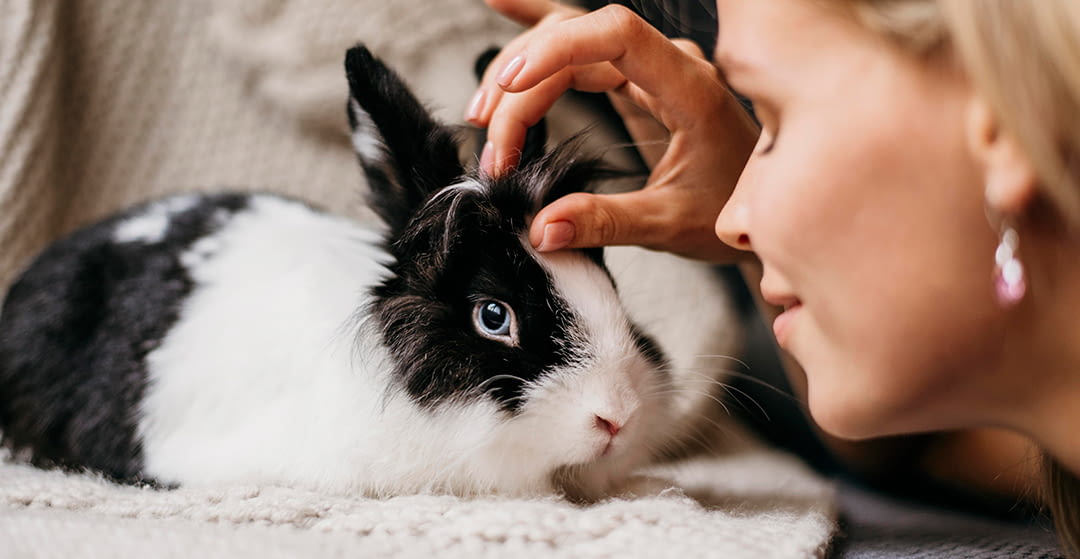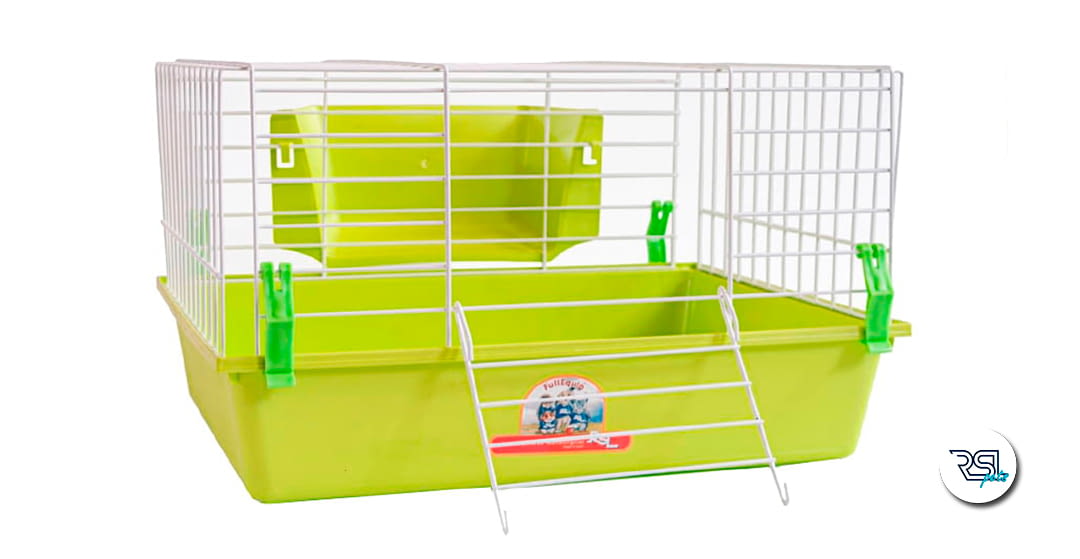
The rabbit is a very sociable animal and daily and constant handling by the owner will condition its character and behavior towards humans. Pet shop owners must know his needs.
In recent years, rabbits (Oryctolagus cuniculus) have become very popular pets due to their friendliness and docility. Contrary to what many people believe, they do not belong to the rodent family, but are lagomorphs.
As the most relevant characteristics, it should be noted that they have teeth that grow continuously throughout their lives, have a very powerful musculoskeletal system, and produce cecotrophs in their depositions (moist feces rich in proteins and bacterial flora, which they ingest in twilight periods).
Despite their sociability, it is important to remember that they are scared animals due to their role as prey in nature, so at certain times the animal will seek "refuge" (plastic shed, cardboard boxes, etc.) to remain resting in a peaceful place.
This is a species whose greatest activity takes place in crepuscular hours (first thing in the morning and at sunset). With a proper diet and good management, they can live up to 12 years.
THE HABITAT
Like rodents, lagomorphs require a quiet environment, and are also very sensitive to sudden changes in the environment. Rabbits can be kept free range or in a cage.
It is advisable to adapt their way of life to the houses: while in a chalet we can have an open-air rabbit hutch with shelters that provide optimal temperature and humidity conditions, in a flat the most advisable option is maintenance in a cage with periods extensive probation.
This aspect is vital for them given their need to gnaw to wear down their teeth; they can gnaw at cables, walls and harmful products such as paints (they contain heavy metals such as lead). They are intelligent pets and can be trained to defecate in a crate set up for it.

CONTRAINDICATED AND RECOMMENDED SUBSTRATES
There are various materials on the market that can be used as a bed or bed. On the one hand we have the substrates that we should never use in the case of rabbits:
Sepiolite, silica beads or clumping sand
All these materials are marketed as litter to be placed in the cat's latrine. None of them should be used because they can be toxic if ingested, some of them give off dust and reduce the level of humidity in the environment, causing serious respiratory problems and foot problems (pododermatitis).
Artificial grass
It can be toxic if swallowed and cause circulatory disorders as the plastic threads get caught in the animal's extremities.
Mesh floor in the cage
This is not the case with our cages, but a large number of those on the market include a grid that separates the bottom of the tray from the area where the animal steps. These grids, which are usually metallic, should be avoided, as they induce plantar problems (foot dermatitis) and are also very uncomfortable for the animal.
On the other hand, among the substrates that can be used we find:
Wood shavings
It is absorbent and cheap, but its drawback is that it can produce dust in the environment.
Pressed wood shavings
It is very absorbent, eliminates odors and solves the problem of releasing dust particles.
Pressed corn stalk
It is similar to the previous one, but with less absorbent and odor removal capacity.
Substrate based on corn seed
It is less absorbent and can be indigestible in some cases.
Straw or hay
It is not absorbent and releases unpleasant odors in conjunction with urine. In addition, the animal can urinate on the hayed grass and then ingest it. It is advisable to provide the hay in a separate manger separated from the substrate.
Newspaper, kitchen paper or soaker
This material is ideal in the case of sick rabbits that require daily changes of substrate. But if you keep it for days it can be unhygienic. It is important that the newsprint does not contain large areas of ink (ideally black and white) or staples, which could cause serious gastrointestinal problems.
Pressed recycled paper substrate
This is perhaps the best bedding for rabbits due to its absorbent capacity and to eliminate odors. It is respectful with the environment and does not present any danger in case of ingestion.
First of all the bed must be kept clean and dry.
TEMPERATURE AND HUMIDITY CONTROL
The optimal room temperature is 18-19 ºC, although they can withstand well ranges between 4 and 26 ºC. You have to avoid sudden changes in temperature because they are very sensitive to them. High environmental humidity and poor ventilation can favor the development of respiratory and skin pathologies (such as ringworm).
Caution: rabbits are very sensitive to temperatures above 29ºC. In veterinary clinics it is frequent to visit patients with heat strokes that can even end the life of the animal. Owners must ensure their animal good ventilation and shaded areas to avoid direct and continuous exposure to the sun.



